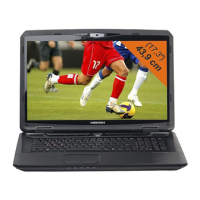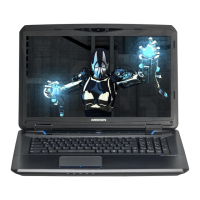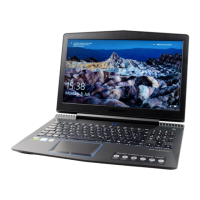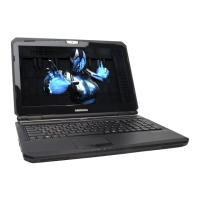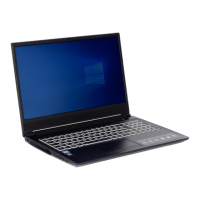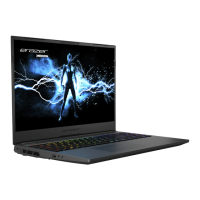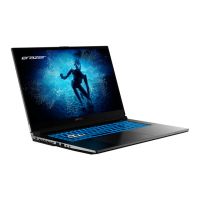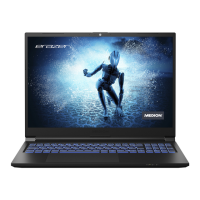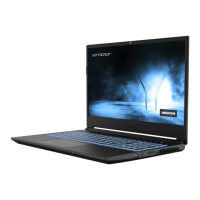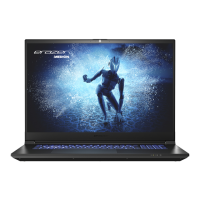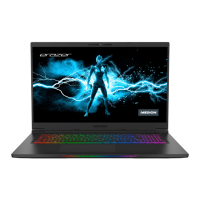
Do you have a question about the Medion Erazer Beast X25 and is the answer not in the manual?
Key symbols and their meanings for understanding warnings and safety information.
Details regarding the wireless local area network frequency range and standards.
Safety warnings concerning the use of the device by children and individuals with limited capabilities.
Essential guidelines for safe and reliable operation of the notebook.
Warning against attempting self-repairs to avoid electric shock and damage.
Recommendations for optimal and safe placement of the notebook.
Specifications for ambient temperature and humidity for reliable notebook operation.
Information and safety precautions regarding the AC power adapter and connection.
Guidelines for proper cable management to prevent damage and tripping hazards.
Details on the touchpad's sensitivity and proper usage to avoid damage.
Precautions to prevent damage to the sensitive notebook display.
Instructions and recommendations for backing up important data regularly.
Guidance on proper posture and workspace setup for user comfort and health.
Diagram and explanation of the notebook's components when opened.
Identification and description of ports and features on the right side.
Identification and description of ports and features on the left side.
Identification and description of ports and features on the rear side.
Instructions on how to power the notebook on and off using the main switch.
Step-by-step guide for the initial startup and system setup process.
Guidelines for proper use and care of the notebook's rechargeable battery.
Process for charging the notebook's battery using the AC adapter.
Procedure for operating the notebook on battery power until it shuts down.
Factors affecting the notebook's battery operational time and performance.
Tips and settings to optimize power consumption and extend battery life.
Instructions on how to safely open and close the notebook's display.
Steps for connecting and using an external display device with the notebook.
Details about the notebook's keyboard layout and functionality.
Instructions for using the notebook's touchpad and its features.
Information on connecting external audio devices to the notebook.
Steps for establishing a wired network connection.
Instructions for connecting to wireless networks and managing Wi-Fi settings.
Details on using Bluetooth for wireless device connectivity and data transfer.
Explanation of Airplane Mode and its effect on wireless connections.
Guidance on correctly inserting memory cards into the reader slot.
Procedure for safely removing memory cards to prevent data loss.
How to set a power-on password for notebook security.
Instructions for using a Kensington lock to physically secure the notebook.
Steps for restoring the notebook to factory settings using PowerRecover software.
Guide to restoring the system using Windows built-in recovery tools.
Procedure for accessing and modifying the notebook's UEFI firmware settings.
Troubleshooting guide for common hardware malfunctions and issues.
Steps to diagnose and identify the root cause of hardware problems.
Information on how to contact customer support for further assistance.
Guidance on obtaining and updating system drivers for optimal performance.
Recommendations for safely transporting the notebook.
Instructions for cleaning and maintaining the notebook to ensure longevity.
Proper procedures for storing the notebook when it is not in use.
Technical notes and procedures for authorized service personnel performing upgrades or repairs.
Details on the standard defining pixel defect guidelines for display quality.
